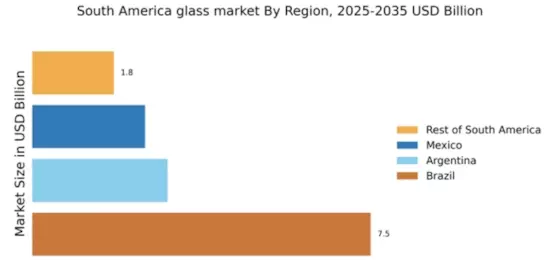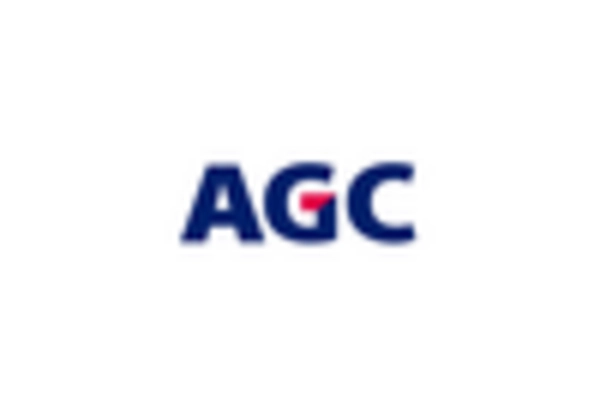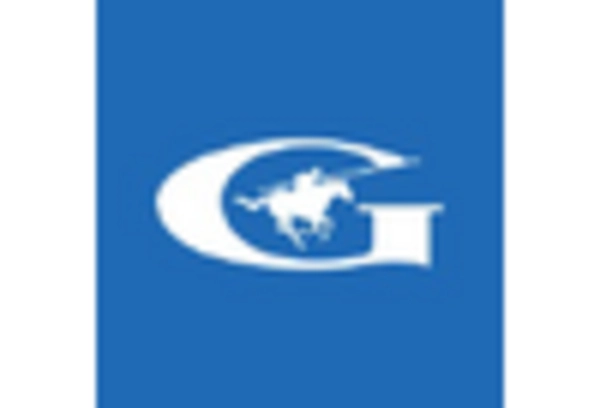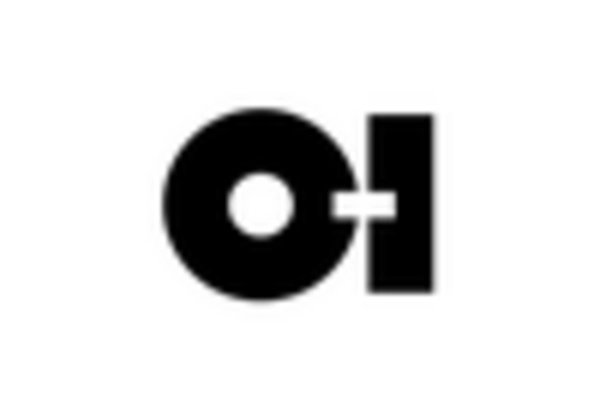Growth in Construction and Real Estate
The ongoing expansion of the construction and real estate sectors in South America is significantly impacting the glass market. With urbanization on the rise, there is an increasing need for modern buildings that utilize glass for aesthetic and functional purposes. In 2025, the construction industry is expected to contribute over $200 billion to the region's economy, with a substantial portion allocated to glass installations in residential and commercial properties. This growth is likely to enhance the demand for architectural glass, which is favored for its energy efficiency and design flexibility. Consequently, the glass market is poised to capitalize on this trend, as builders and architects increasingly incorporate glass into their projects.
Increased Investment in Renewable Energy
The shift towards renewable energy sources is influencing the glass market in South America. Solar energy, in particular, is driving demand for specialized glass products used in photovoltaic panels. As governments and private sectors invest heavily in renewable energy infrastructure, the glass market is likely to see a surge in demand for high-performance glass that enhances energy efficiency. In 2025, the renewable energy sector is projected to grow by 10%, creating new opportunities for glass manufacturers to supply materials for solar applications. This trend underscores the potential for the glass market to align with broader energy goals, fostering sustainable development in the region.
Rising Demand for Eco-Friendly Packaging
The increasing consumer preference for sustainable products is driving the glass market in South America. As businesses seek to reduce their environmental footprint, glass packaging is gaining traction due to its recyclability and lower carbon emissions compared to plastic alternatives. In 2025, the demand for glass packaging is projected to grow by approximately 8% annually, reflecting a shift towards eco-conscious consumer behavior. This trend is particularly evident in the beverage and food sectors, where companies are investing in glass solutions to meet regulatory requirements and consumer expectations. The glass market is thus positioned to benefit from this rising demand, as manufacturers adapt their production processes to align with sustainability goals.
Regulatory Support for Green Building Standards
Regulatory frameworks promoting green building standards are shaping the glass market in South America. Governments are increasingly implementing policies that encourage the use of energy-efficient materials in construction, including glass. These regulations often mandate the incorporation of sustainable practices, which can lead to a higher demand for glass products that meet specific energy performance criteria. In 2025, it is anticipated that compliance with these standards could drive a 12% increase in the use of energy-efficient glass in new buildings. As a result, the glass market is likely to benefit from this regulatory support, as manufacturers adapt their offerings to meet evolving standards and consumer expectations.
Technological Innovations in Glass Manufacturing
Technological advancements in glass manufacturing processes are reshaping the glass market landscape in South America. Innovations such as automated production lines and advanced coating technologies are enhancing the quality and efficiency of glass products. In 2025, it is estimated that the adoption of these technologies could reduce production costs by up to 15%, making glass more competitive against alternative materials. Furthermore, the introduction of smart glass, which can adjust its properties based on environmental conditions, is gaining traction in the market. This evolution in manufacturing technology not only improves product offerings but also positions the glass market as a leader in innovation, attracting investments and fostering growth.


















Leave a Comment